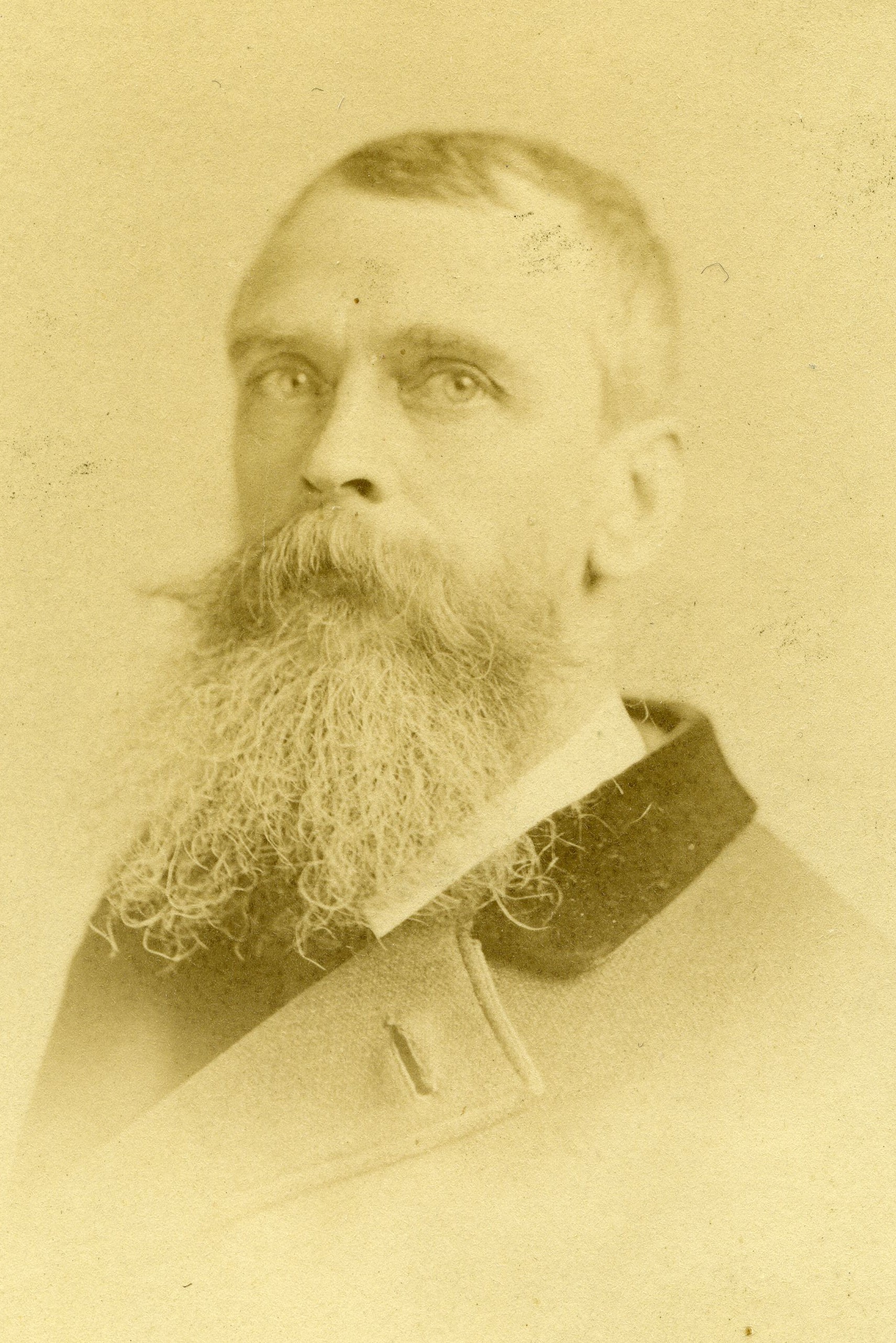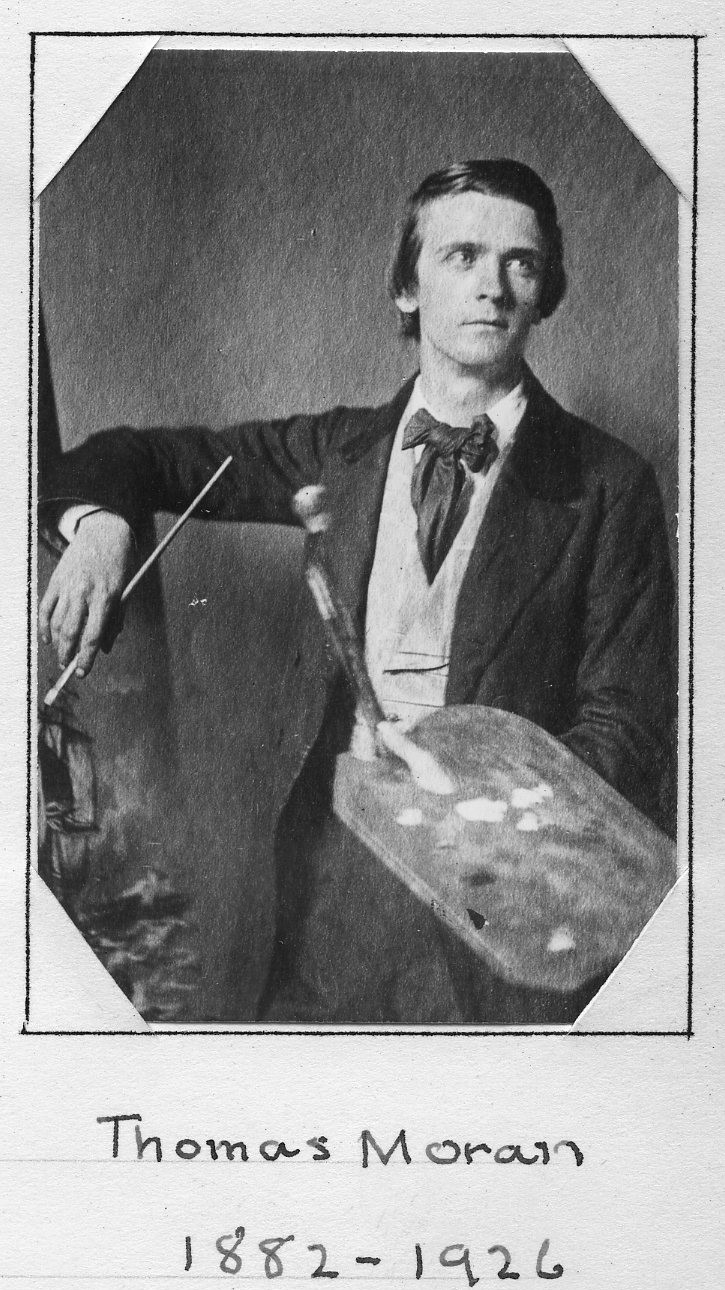Artist
Centurion, 1882–1926
Born 12 February 1837 in Bolton, England
Died 25 August 1926 in Santa Barbara, California
Buried South End Cemetery , East Hampton, New York
, East Hampton, New York
Proposed by Horace W. Robbins and Edmund C. Stedman
Elected 6 May 1882 at age forty-five
Proposer of:
Seconder of:
Century Memorials
It is a long-past generation that the name of Thomas Moran recalls to us; indeed, he had nearly rounded out his ninetieth year. In a way, his large canvases of the Rocky Mountains, his “Chasm of the Colorado” and his Yellowstone Canyon, seem old-fashioned painting at this day. But Moran’s brush was wielded in 1873 for an American public to whom America between the Missouri and the Sierras was terra incognita. School-children whose geographies drew a dotted line around that area as the boundary of the Great American Desert, readers of the newspapers whose only association with the northern plains and mountains was the Custer massacre, even public men to whom the Rockies suggested little except the Mormons with their plural wives and the bonanza-miners of Colorado, gazed with amazement and quickened imagination at Moran’s exhibition of the unsuspected marvels.
The American tourist of 1927, whose Pullman takes him in two or three days to the brink of those mighty products of Nature’s past convulsions, can hardly picture to himself the limitations of the tourist of 1873. That tourist went on personally-conducted trips to Europe; he belonged to the Innocents Abroad, but his America was an unopened book. It would not be easy to overrate the service of Moran in enlarging the vision, not to say the pride and aspiration of the plain American citizen, at learning thus that he did not have to leave his native shores to look on something more wonderful than the Alps. Moran’s fellow-artists have protested in recent years against associating him wholly with these works. They have cited his graceful and restful paintings of old Mexico, his British meadows, his pastoral Long Island, his mediæval Venice, his etchings, which anticipated even Whistler; for Moran was a many-sided artist. But there is little room to doubt which of his works the American people will remember.
Alexander Dana Noyes
1927 Century Association Yearbook
Thomas Moran was an American painter and graphic artist, specializing in landscape painting. His gigantic canvases depict the grandeur and immensity of the Far West.
Moran was born in Bolton, Lancashire, England, and taken to Philadelphia at the age of seven, where he was educated in public schools. Three of Moran’s brothers were artists, and he learned to paint from his brother Edward. Early on he became familiar with the work of Washington Allston, Rembrandt Peale, John Neagle, and other American artists.
In 1853, Moran was apprenticed to a wood engraver in Philadelphia. It was in this position that he began to paint and draw seriously, working diligently on his skills as both a watercolorist and an illustrator. In 1861, Moran went to London to study firsthand with Turner and returned to America the following year. He found that he was increasingly fascinated by the grandiose and vastness found in nature. In 1871, serving as a guest artist with the Geological Survey of the Territories, he traveled into the Yellowstone country. The following year he toured the Yosemite Valley in California.
In 1873, he was with Major John Wesley Powell’s expedition to the West. It was on this trip that Moran painted his two most famous works, The Grand Canyon of the Yellowstone and The Chasm of the Colorado, both of which were purchased (for a previously unheard-of sum of $10,000 each) by Congress to be displayed in the Capitol in Washington. With the money he was earning from his new-found fame, Moran again traveled to Europe, this time to Venice, where he purchased a gondola and shipped it back to the U.S. in order to use it as a model for a variety of Venice scenes he produced after 1890. He moved West in his old age and died in Santa Barbara, California in 1926.
James Charlton
“Centurions on Stamps,” Part I (Exhibition, 2010)


